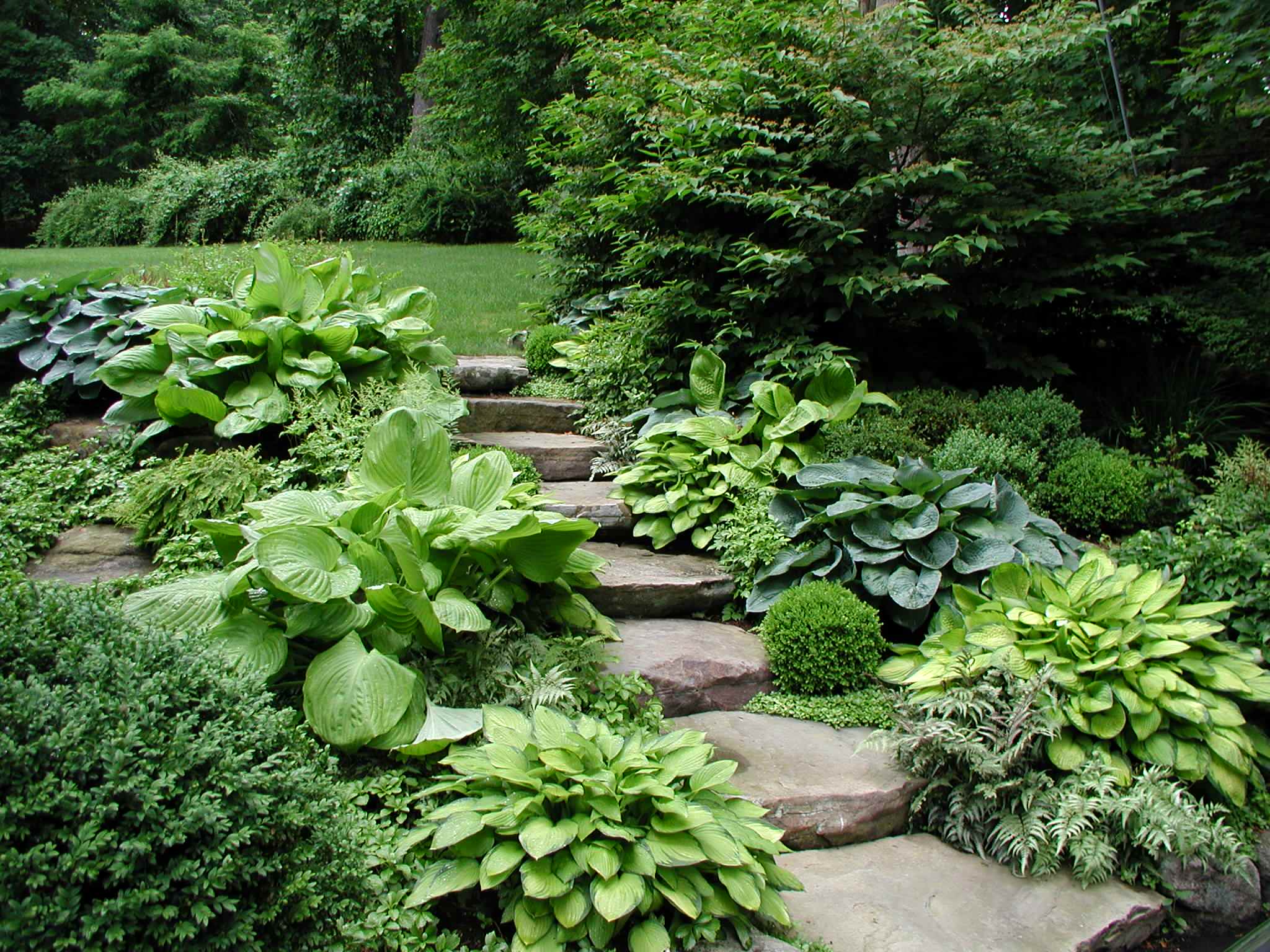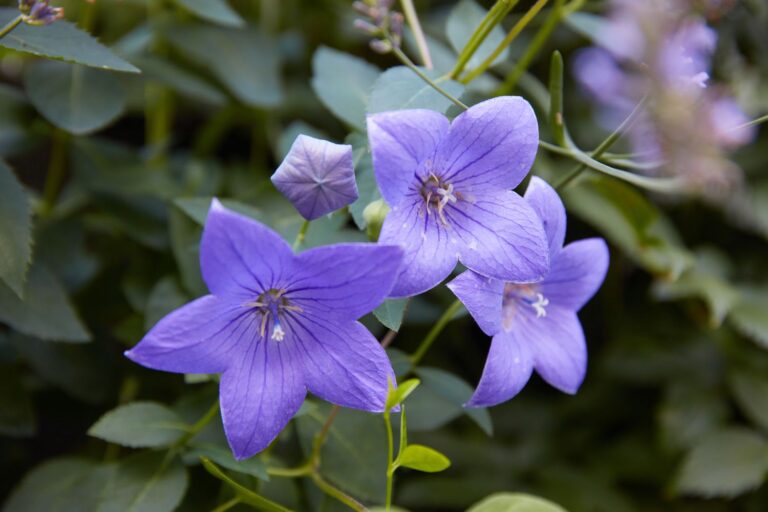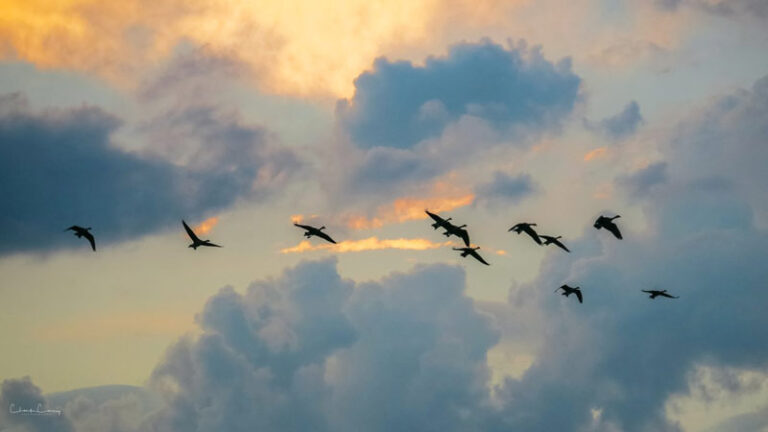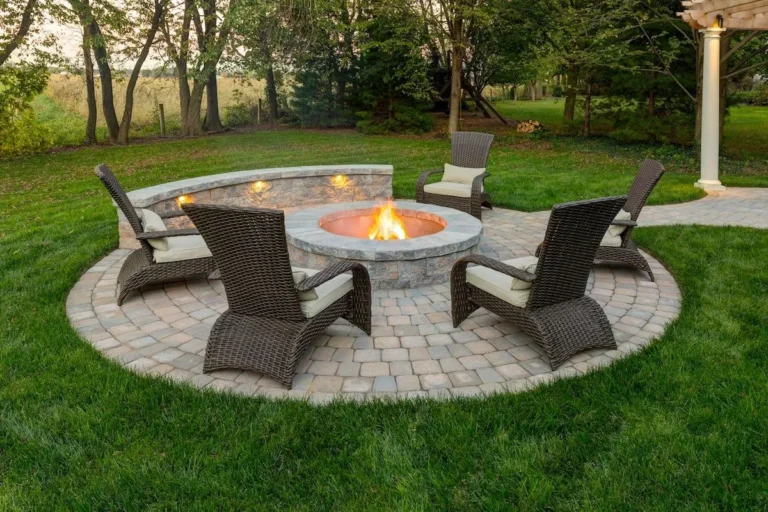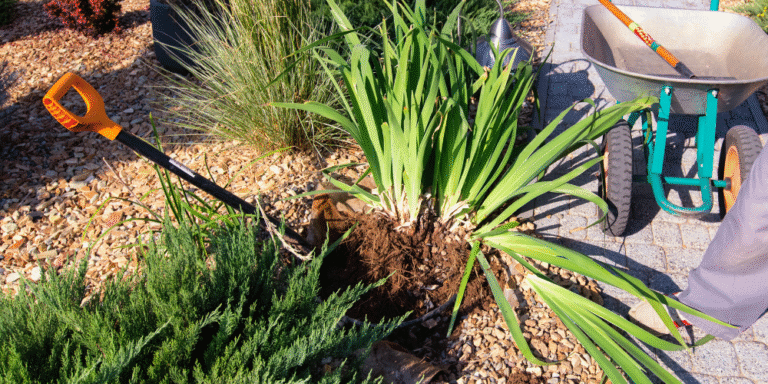12 Best East Facing Garden Plants That Thrive in Morning Sun
What if I told you that your east-facing garden’s gentle morning light could become your secret weapon for creating the most lush, vibrant garden on your block? While your neighbors battle scorching afternoon heat, you’ll be harvesting crisp lettuce, admiring spectacular hydrangeas, and enjoying cool, peaceful garden retreats—all because you chose plants that actually prefer those cool, shady conditions.
This morning light which falls on your east garden, is not a drawback– it is a chance. Other gardeners may be concerned with the hot afternoon sun which places stress upon the plants and makes them thirsty, whereas your cool and shady sites present the ideal home of some of the best and most productive plants of nature. The trick is to select the plants that flourish in just such conditions: the soft morning sun and then the shaded afternoon sun protection.
The Unique Microclimate in Your East-Facing Garden
Eastern gardens receive 4-6 hours of soft morning sun then the day becomes cool and shady. The protection that comes with the nature is best suited to most plants particularly when the summer sun can be very hot and soil might dry extremely fast. The morning sun provides sufficient sunlight to produce an adequate amount of light, whereas the afternoon shade prevents heat stress and conserves water.
The cultivated soil will depend on the situation, but east gardens tend to retain water better than south or west. That is what make them superior when it comes to shade-loving plants that cannot live in hot, dry areas. It is a trick of tuning plants to their natural environment, rather than struggling with them.
“In North America, an east-facing garden will get morning sunlight and tend to be cooler than a west-facing garden, which falls under stronger solar rays.”
12 Outstanding Plants to Grow on the East Side
Hostas (Hosta spp.) – The Shade Garden Foundation

USDA Zones: 3-9 Light: Partial to full shade Height: 6 inches to 3 feet
The hostas are the most suitable in the shade gardens and they come in a variety of leaf sizes, colors and textures. They grow in eastern oriented position where morning sun will illuminate their leaves without scalding them.
Planting and care: Plant in rich well-draining soil using compost. Allow vegetation space based on their adult size giant ones require 3-4 feet spacing and small ones 12 inches spacing. Water extensively once a week in case of water drying. Mulch 2 inches to retain moisture.
Design Applications: Hostas may be used as a found bed, a border, or large masses around trees. Their well-groomed foliage goes well with ferns and flowering perennials. Famous ones such as Sum and Substance are used as eye-catching focus points with the texture of small areas with the Blue Mouse Ears.
Astilbe (Astilbe spp.) – Feathery Shade Blooms
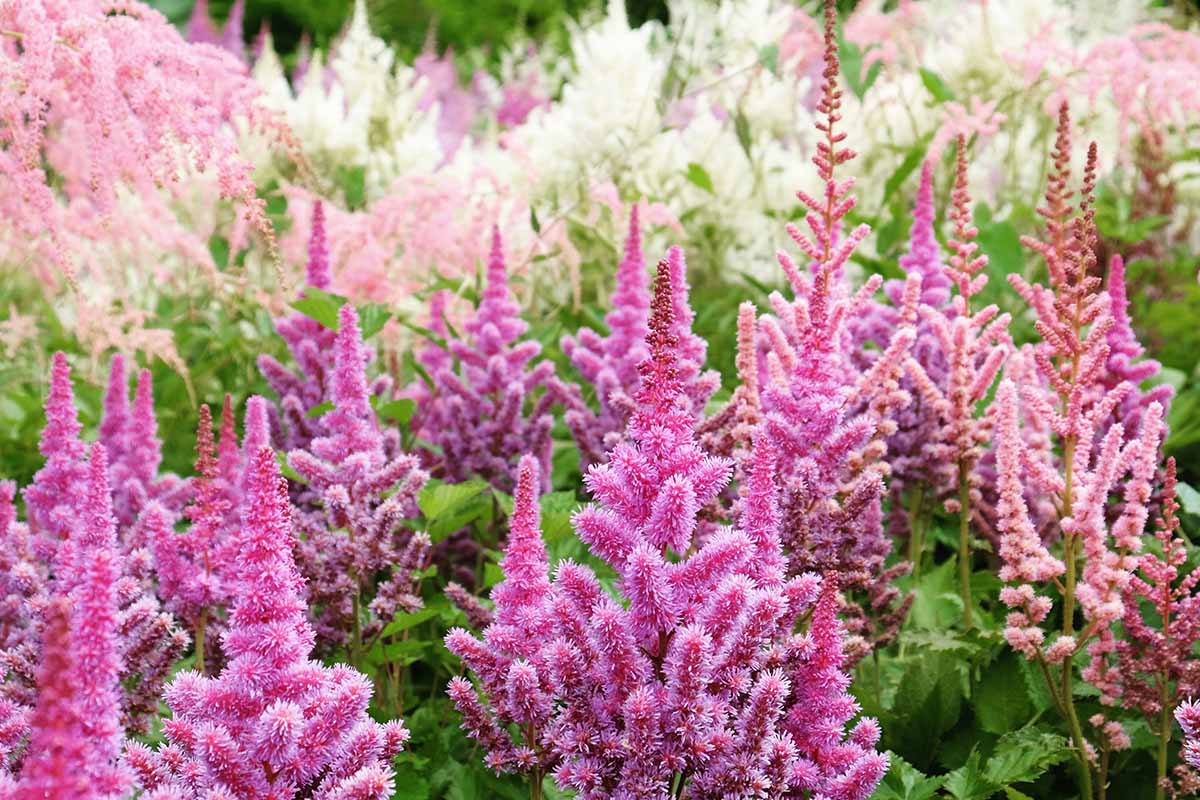
Zones: 4-8 Light: Partial shade Height: 1-4 feet
Astilbe provides a vertical appeal of feathery pink, white, red or lavender plumes. Such hardy perennials prefer the moist and cool air of east-facing gardens and will flower in late spring to the summer.
Planting: Astilbe requires a moist and rich soil. Use compost and old manure during planting. Keep soil wet all season. Split clumps at the beginning of the spring after every 3-4 years to maintain vigor. Take away withered flowers and more ones will grow.
Plant Applications: Plant in groups of 3-5 along wood edges, stream banks or mixed boundaries. Their light appearance is compatible with bold hostas, ferns and bleeding hearts.
Japanese Painted Ferns (Athyrium niponicum) Artistic Foliage
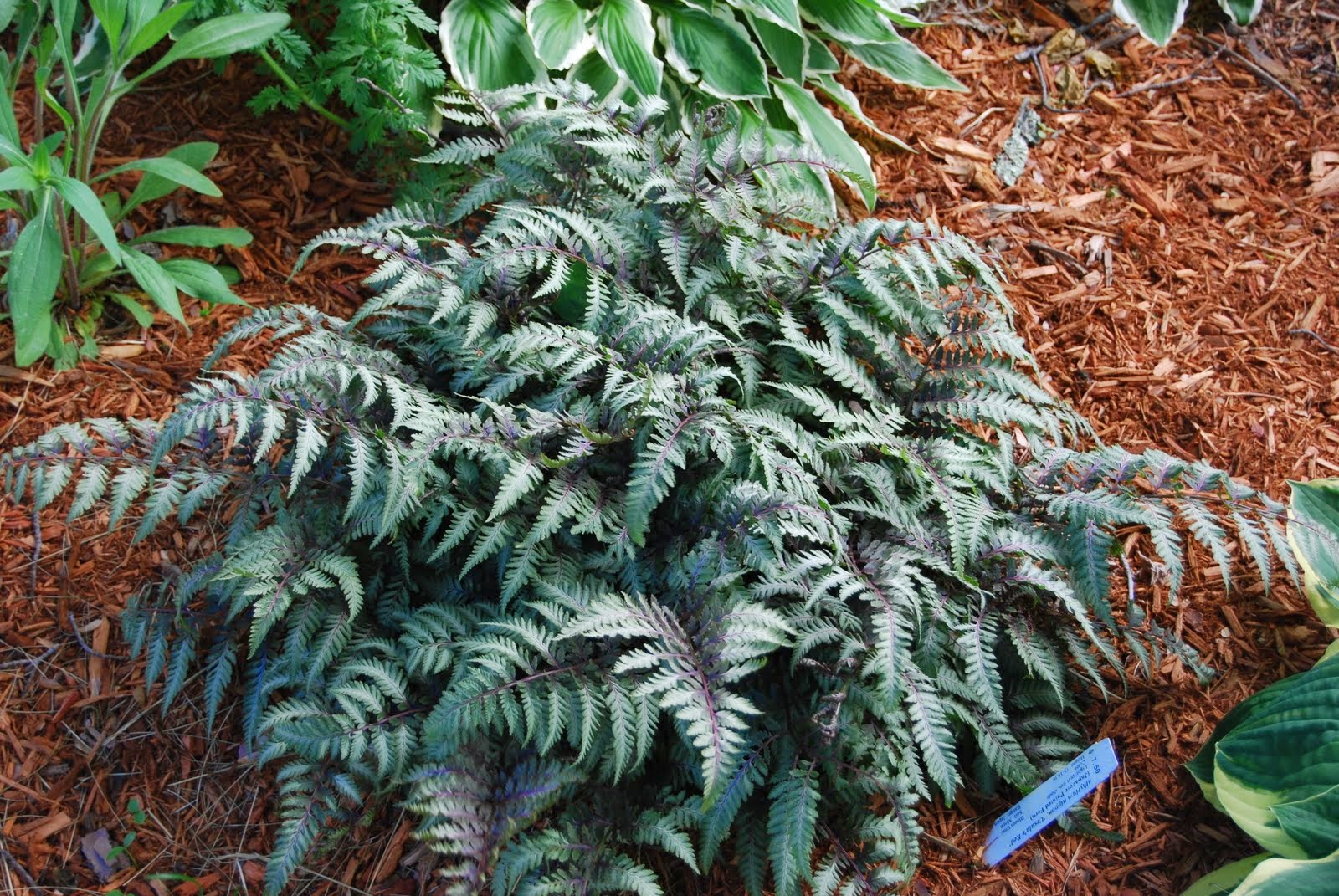
USDA Zones: 4-8 Light: Part to full shade Height: 12-18 inches
These ferns are painted like by hand in silver, burgundy and green. They prefer the dampness and shadow of facing beds.
Planting and Care: Plant in humus-based well-draining soil. Time of year spring or fall, 12-18 inches. Never allow the soil to dry, but keep it drained so that it does not rot. Add leaf mold or compost annually.
Design Applications: Blend with hostas, astilbe and wood plants to create the serene woodland characters. Their lustre is glowing even when other plants are in inactivity.
Hydrangeas (Hydrangea macrophylla) Classic Shade Bloom
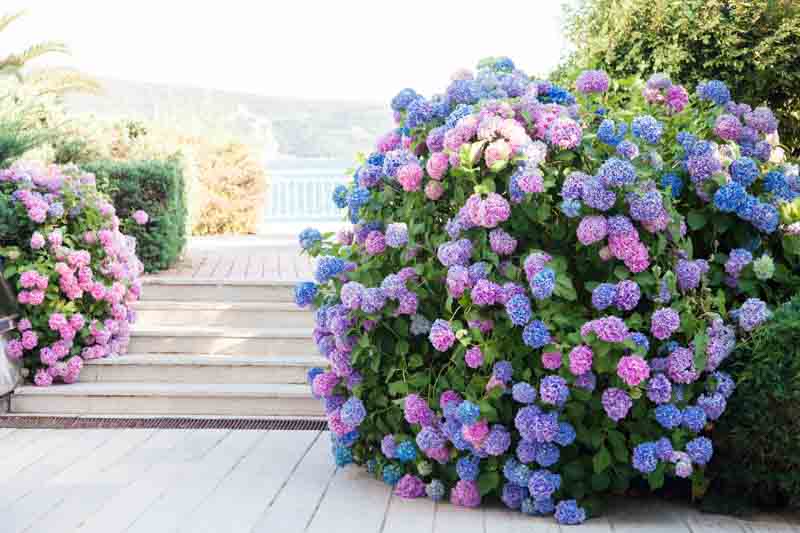
Zones: USDA 5-9 Light: the partial shade in the sunset zone and height: 3-6 feet
Bigleaf hydrangeas produce enormous mophead or lacy cap flowers with pink, blue, or purple color. Light coming east keeps them in the morning and safe in the afternoon.
Planting/Care: Plant in rich well-draining soil with moist soil. During spring and in the middle of summer hydrangeas require a balanced fertilizer. Their color varies with the pH: blue in acidic soil (pH 5.5), pink in alkaline soil (pH 6.5). Add test soil and add aluminum sulfate to make blue or add lime to make pink.
Design Applications: use as show-pieces, foundations, or as borders. Mix with hostas, ferns and azaleas to create mixed color. Their huge flowers also cut well.
Azaleas (Rhododendron spp.) – Season Spectacular Spring
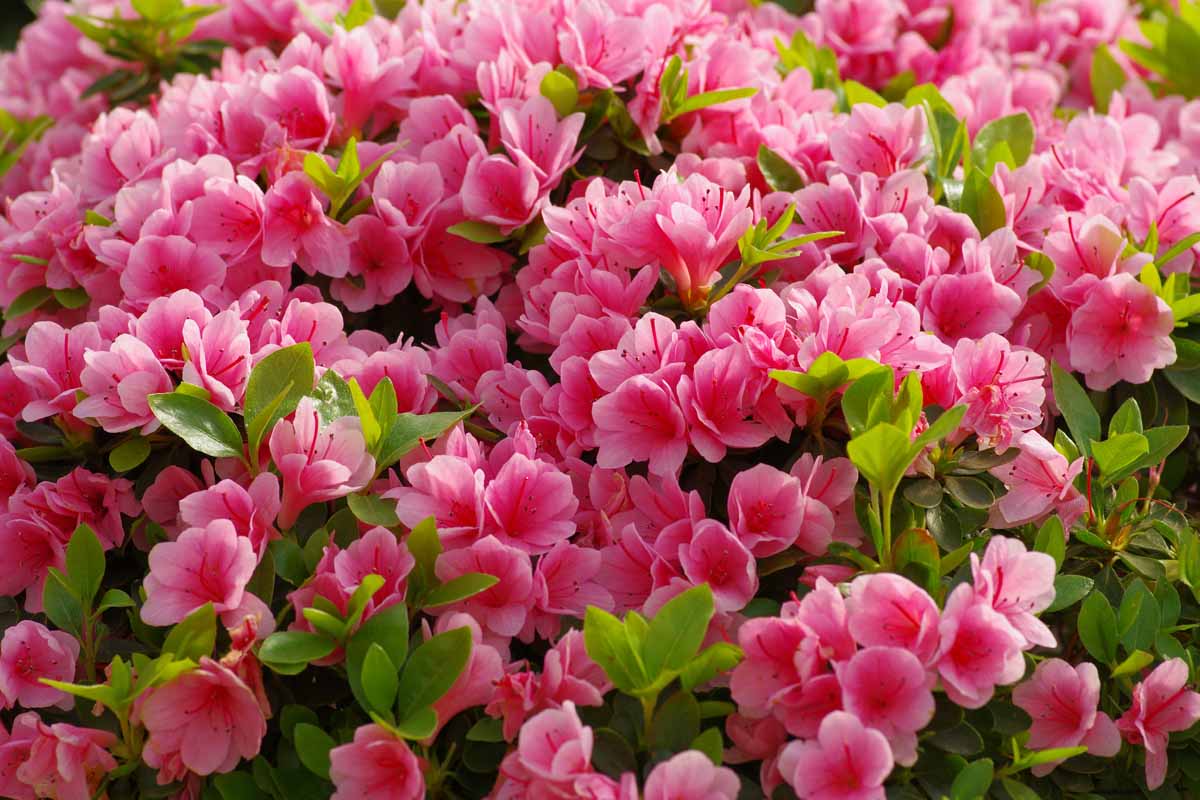
USDA Zones: 5-9 Light: partial shade Height: 2-8 feet depending on variety
Each year Azaleas are flowering in the spring in colors ranging between white and deep red. They prefer filtered light and cool air that is provided by east-facing bed especially without exposure to the scorching afternoon sun.
Planting and Care: Azaleas require acidic soil (4.5-6.0), and well drained soil. Add peat moss, compost and sulfur, as required. Plant shallowly to allow roots to be exposed to air. Deep bathe with water then allow soil to dry between feeds. Cover the soil with pine needles or bark to maintain the soil acidic.
Design Applications: Plant as bases, borders or large groups to have spring color. Plant hostas, ferns or wood flowers so as to provide interest throughout the year. There are also certain types that become bright during fall.
Bleeding Heart (Dicentra spectabilis), Romantic Woodland Beauty

Zones: 3-9 Light: partial to total shade Height: 2-3 feet
The arching stems contain heart-shaped flowers on bleeding hearts. They embrace the coolness and wetness of east facing areas, and hibernate in a classy way when it is hot in summer.
Planting & Care Planting: in well-drained soil that remains moist. They can withstand low temperatures and can sleep down in hot weather. Shower off yellow leaves trim and spot them to prevent crowns being disturbed. Split 4-5 years in spring when full.
Design Applications: Grow hostas, ferns and other shade perennials to fill the space when bleeding hearts dry out. They are of an arching form which fits woodland gardens, shaded borders, or naturalized areas beneath non-deciduous trees.
Coral Bells (Heuchera spp.) Colorful Foliage Stars
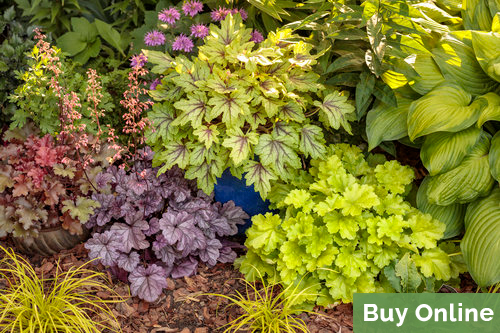
Zones in the USDA: 4-9 Light: partial shade Height: 8-18 in.
Several of these are bright leaf colors which in lime green to deep burgundy are afforded by modern coral bells, as well as interest throughout the year in mild climates. Light flowers and the brightening of dark spots are good attractions of humming-birds, and they brighten the entire season.
Planting and Care: Use well-draining soil that is organic. Do not use heavy clay or standing water. Crowns of plants on the ground, without being put in the ground. Trim spent flower stems to keep them trim. Break up after every 3-4 years to maintain energy.
Applications in Design: Edging, use in rock gardens or in mass plantings. Their small size fits perfectly into containers or in small beds. Want a contrast of texture and color, combine with hostas, ferns, or astilbe.
Lenten Rose (Helleborus orientalis) Blooms: Winter-Spring

Zones in USDA: 4-9 Light: Partial to complete shade Height: 12-18 inches
The lenten roses are early winter vegetation when not many other plants are growing. They are tough, perennial and grow well in sheltered gardens on the east side and create room-for-room appeal with pretty leaves.
Planting and Care: Plant in a well-drained soil that is moist. They prefer neutral to a few alkaline soil (pH 7.0-7.5). In late winter, remove old battered leaves to display new ones. Allow seeds to fall and self-plant, or pull out in case you do not desire planting.
Design Applications: Plant between trees in the wintertime. Combine with early spring bulbs, ferns or other shade perennial to add to interest in the season.
Foamflower (Tiarella spp.) Fencing Groundcover
Zones: 4-9 Light: Part shade to full shade Height: 6-12 inches
In spring, foamflower grows green fluffy carpets with white or pink spikes. They grow in damp and sheltered beds facing the east and grow slowly to form beautiful colonies.
Planting and Care: Requires deep rich and moist soil with sufficient drainage and is not dry all season. They like acidic soil and are also due to annual leaf mold or compost. Separate clumps after every 3-4 years to maintain strength.
Application into Design: Groundcover on shaded paths or naturalized areas. Their distribution prevents erosion on dark curves. Mix with ferns, hostas or other shade lovers to add multi-layered texture.
Sweet Woodruff (Galium odoratum) is a fragrant Groundcover
Zones USDA: 4-8 Light: partial or full shade Height: 6-8 inches
Sweet woodruff plants form thick blooms of smelling whorled leaves with tiny white flowers during spring. It eats the cool damp gardens like a fierce beast, and once it gets going it kills weeds.
Planting and Maintenance: Plant in soils with lots of moisture that are well drained. Proliferated by under-ground stems; it may get aggressive in the right locations- it contains a barrier or it expands where expansion is desired. The leaves are sweet to the smell, particularly when dried.
Applications: Can be used under trees or bushes, in shady areas where grass will not grow. It works well in naturalized gardens and woodland. Potpourri or traditional medicine can be made out of dried leaves.
Convallaria majalis Lily-of-the-valley (Convallaria majalis) Classic Shade Perennial
Zones: 3-9 Light: Partial to full shade Height: 6-8 inches
Lily-of-the-valley has bell-shaped white flowers that have a sweet scent every spring. They are hardy, spreading perennial, and grow quite well in the shade, not always the sunside, of gardens under trees, even there.
Planting: Plant stems of plants underground in fall or early spring, 6 inches apart. They can withstand most soils but would rather work in rich soil that has good drainage. The succeeding redberries are poisonous- have them out of the way of kids and domestic animals.
Design uses: Dictionary: Groundcover in shaded frontiers or under trees. They occupy shady areas that other plants cannot cover because of their small size and spreading nature.
Japanese Forest Grass (Hakonechloa Macra)- Graceful Shade Grass

USDA Zones: 5-9 Partial shade light height: 12-18 inches
Japanese forest grass is also used to provide movement and texture to shade gardens with elegant, cascading leaves. The dark spaces are made to seem brighter with the help of golden varieties, and in the woodland planting, the touch of green ones is introduced.
Planting and Care: Plant in rich moist well drained soil. They require regular moisture yet they do not like to stand in water. Reduce to 2-3 inches late winter before new growth. Divide after every 3-4 years in the spring where clumps are excessively large.
Applications in Design: Can be used as edging, in woodland beds, or cascading down the side of rocks and walls. Its elegant style suits the Asian-style or naturalistic gardens. Plant with contrast hostas, ferns or other shade perennials.
Exploring the East-Facing Gardens
Remember that the east facing beds are capable of producing delicious foods. Numerous vegetables and plants prefer the morning sun and afternoon shade which are cool, and protected.
Partial shade Leafy greens that grow in partial shade

Lettuce, spinach, arugula, and kale are east facing plants. The morning sun provides them with good growth and afternoon shade helps them not to bolt or get bitter. Grow in deep and fertile soil and harvest regularly to guarantee constant supply.
Shady Herbs, Cool Selects
Chives, parsley, cilantro, and dill are easy to grow in cool air and can retain their productivity in west-facing beds longer. Plant them in pots or beds where there is a consistent moisture level and drainage. Pruned to make them bushy and not to bloom.
East Coast Design Strategies to be successful
Development of Layered Shade Gardens
Add some height and texture: the tall shrubs such as hydrangeas and azaleas, the medium perennials such as astilbe and hostas, and groundcovers such as sweet woodruff and foamflower. This provides the visual attention and makes good use of space.
Moisture and Drainage Management
East beds retain a lot of moisture as compared to sunny areas, but drainage is also essential. Add compost and sand to clay soils, and construct raised beds in poorly drained soils. Apply 2-3 inches of mulch on all the plantings to retain moisture and reduce weeds.
Extending the Season
Plant cool weather crops such as spinach and lettuce earlier under the shelter, and later in the fall continue with them. Afternoon shade prevents heat damage which may ruin a sunny beds harvest.
Common garden-related problems can be encountered by all individuals, regardless of their expertise in this area
Dealing with Dry Shade
Beds which face the east can still dry under trees or foundations. Enhance the soil using compost and leaf mould, water infrequently but deeply, and select shade-tolerant plants, e.g., coral bells and lenten rose.
Managing Vigorous Spreaders
Hardeness can spread some shade plants such as sweet woodruff and lily-of-the-valley. Plant barriers, cultivate them where they are encouraged to spread, or choose a less vigorous such as foamflower and Japanese forest grass.
Prevention of Disease in Sticky Climates
Funga may be induced by shade and moisture. Plants have room to breathe, water on the ground rather than pouring over the leaf, and get sick material off as soon as it appears. Select varieties that are disease resistant.
Your garden, which faces the east, may be made green and prolific, and lovely
You are not working against nature by picking plants that are morning-loving plants that love afternoon shade. The outcome will be a garden that will grow and flourish in those cool, safe locations- in many cases actually doing better than plants in more adverse sunny locations.
Begin with the sure things such as hostas and astilbe and experiment with other plants that prefer shades. Before long you will have made a difficult area your own favorite retreat with all the colors of flowers, mixed textures, and perhaps even some fresh vegetables on your table.
University of Minnesota Extension – Hostas
NC State Extension – Japanese Painted Fern

